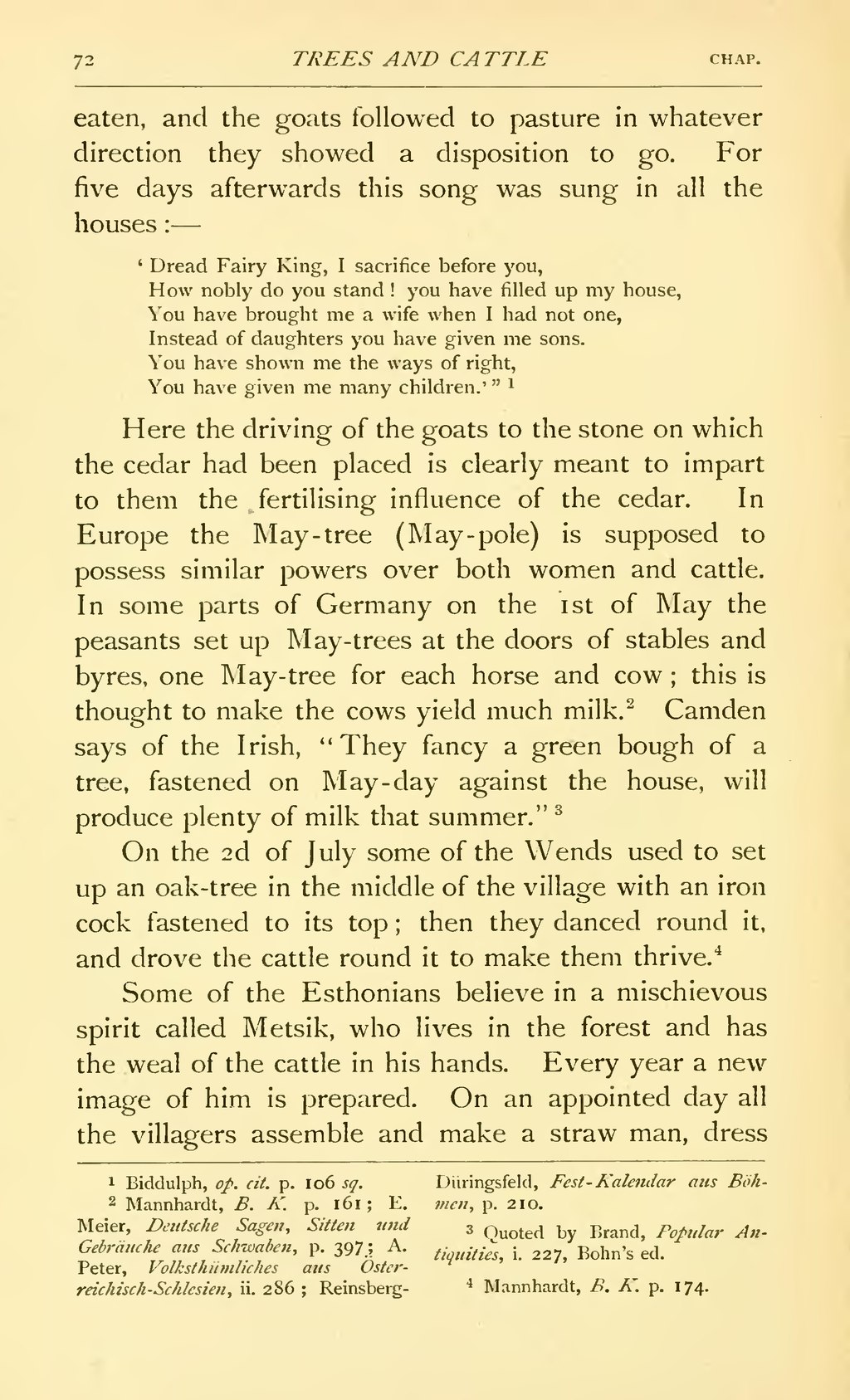eaten, and the goats followed to pasture in whatever direction they showed a disposition to go. For five days afterwards this song was sung in all the houses:—
‘Dread Fairy King, I sacrifice before you,
How nobly do you stand! you have filled up my house,
You have brought me a wife when I had not one,
Instead of daughters you have given me sons.
You have shown me the ways of right.
You have given me many children.’ ”[1]
Here the driving of the goats to the stone on which the cedar had been placed is clearly meant to impart to them the fertilising influence of the cedar. In Europe the May-tree (May-pole) is supposed to possess similar powers over both women and cattle. In some parts of Germany on the 1st of May the peasants set up May-trees at the doors of stables and byres, one May-tree for each horse and cow; this is thought to make the cows yield much milk.[2] Camden says of the Irish, “They fancy a green bough of a tree, fastened on May-day against the house, will produce plenty of milk that summer.”[3]
On the 2d of July some of the Wends used to set up an oak-tree in the middle of the village with an iron cock fastened to its top; then they danced round it, and drove the cattle round it to make them thrive.[4]
Some of the Esthonians believe in a mischievous spirit called Metsik, who lives in the forest and has the weal of the cattle in his hands. Every year a new image of him is prepared. On an appointed day all the villagers assemble and make a straw man, dress
- ↑ Biddulph, op. cit. p. 106 sq.
- ↑ Mannhardt, B. K. p. 161; E. Meier, Deutsche Sagen, Sitten und Gebräuche aus Schwaben, p. 397.; A. Peter, Volksthümliches aus Osterreichisch-Schlesien, ii. 286 ; Reinsberg-Düringsfeld, Fest-Kalendar aus Böhmen, p. 210.
- ↑ Quoted by Brand, Popular Antiquities, i. 227, Bohn’s ed
- ↑ Mannhardt, B. K. p. 174.
